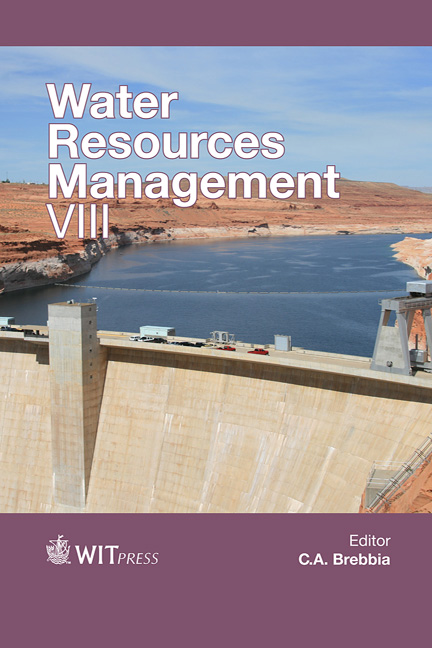Water Productivity Of Origanum Syriacum Under Different Irrigation And Nitrogen Treatments Using An Automated Irrigation System
Price
Free (open access)
Transaction
Volume
196
Pages
10
Page Range
211 - 220
Published
2015
Size
617 kb
Paper DOI
10.2495/WRM150181
Copyright
WIT Press
Author(s)
H. Jaafar, Z. Khraizat, I. Bashour, M. Haidar
Abstract
Limited water supplies in semi-arid and arid regions are limiting crop production and profitability. Lebanese Oregano (Origanum syriacum) is a perennial herb of the Lamiaceae (mint) family that has high commercial and medicinal potential, with little known about its water requirements. A four-replicate split-plot field study was conducted during 2013–2014 in the Beqaa Valley in Lebanon to determine the yield response of Origanum syriacum to different levels of drip irrigation and evapotranspiration (ETc), and to document its growth parameters and soil water use. Four irrigation treatments were automatically set by applying 60%, 80%, 100% and 120% of Hargreaves ET as calculated by a commercial irrigation controller and weather station. Flowmeters were used on the four treatments and the irrigation amounts were measured. Results show that total fresh and dry yield as well as dry leaf yield significantly decreased with decreasing %ET. The highest ET treatment gave the highest fresh and dry yield and dry leaf yield but the lowest dry/fresh yield ratio. The 60% ET was significantly lower than all other treatments. No significant difference was found among the 60% and the 80% ET treatments. Water use efficiency increased significantly as irrigation decreased. Water productivities were highest (0.97 kg/m3) for the lowest irrigation treatment (vs. 0.70 kg/m3 for the highest irrigation treatment).
Keywords
water productivity, origanum, irrigation, nitrogen, semi-arid





